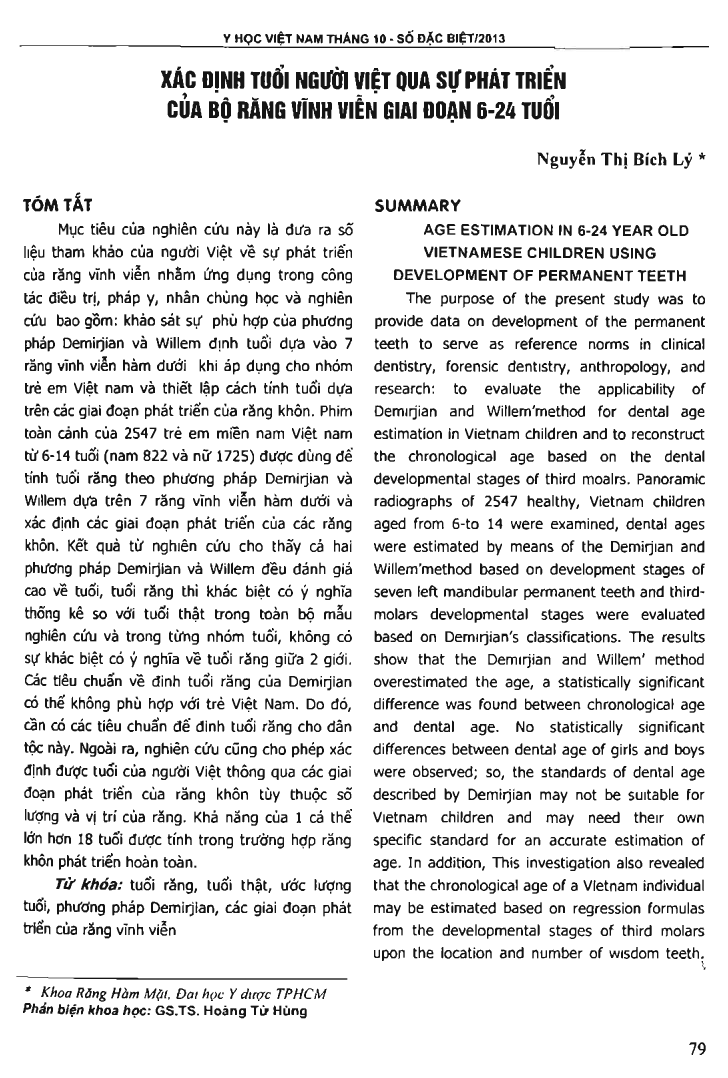
The purpose of the present study was to provide data on development of the permanent teeth to serve as reference norms in clinical dentistry, forensic dentistry, anthropology, and research: to evaluate the applicability of Demirjian and Willem'method for dental age estimation in Vietnam children and to reconstruct the chronological age based on the dental developmental stages of third moalrs. Panoramic radiographs of 2547 healthy, Vietnam children aged from 6 to 14 were examined, dental ages were estimated by means of the Demirjian and Willem'method based on development stages of seven left mandibular permanent teeth and thirdmolars developmental stages were evaluated based on Demirjian's classifICations. The results show that the Demirjian and Willem' method overestimated the age, a statistically significant difference was found between chronological age and dental age. No statistically significant differences between dental age of girls and boys were observed; so, the standards of dental age described by Demirjian may not be suitable for Vietnam children and may need their own specific standard for an accurate estimation of age. In addition, This investigation also revealed that the chronological age of a Vietnam individual may be estimated based on regression formulas from the developmental stages of third molars upon the location and number of wisdom teeth. Probabilities for an individual to be older than 18 years were also calculated in case of fully developed third molar teeth.
- Đăng nhập để gửi ý kiến
